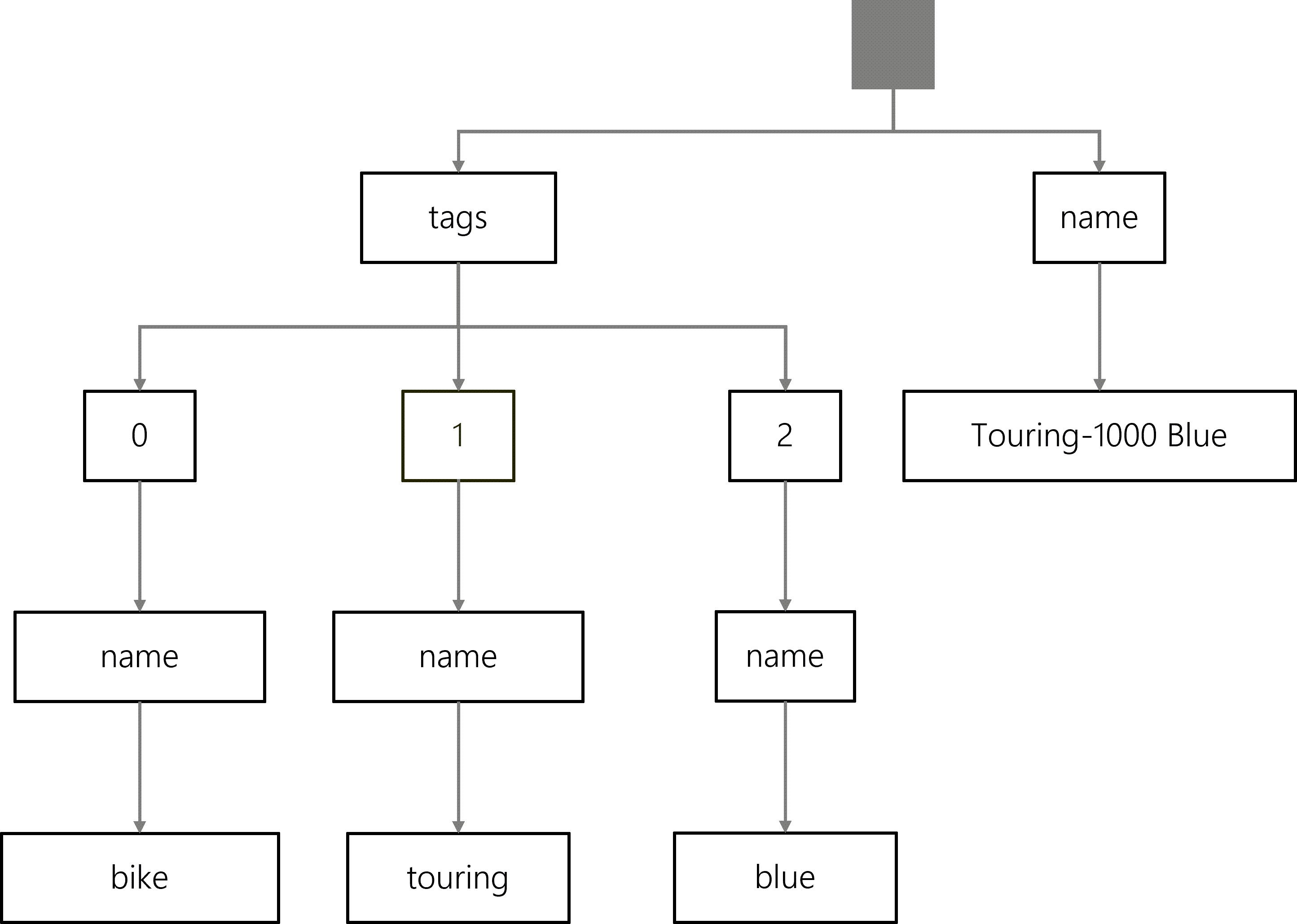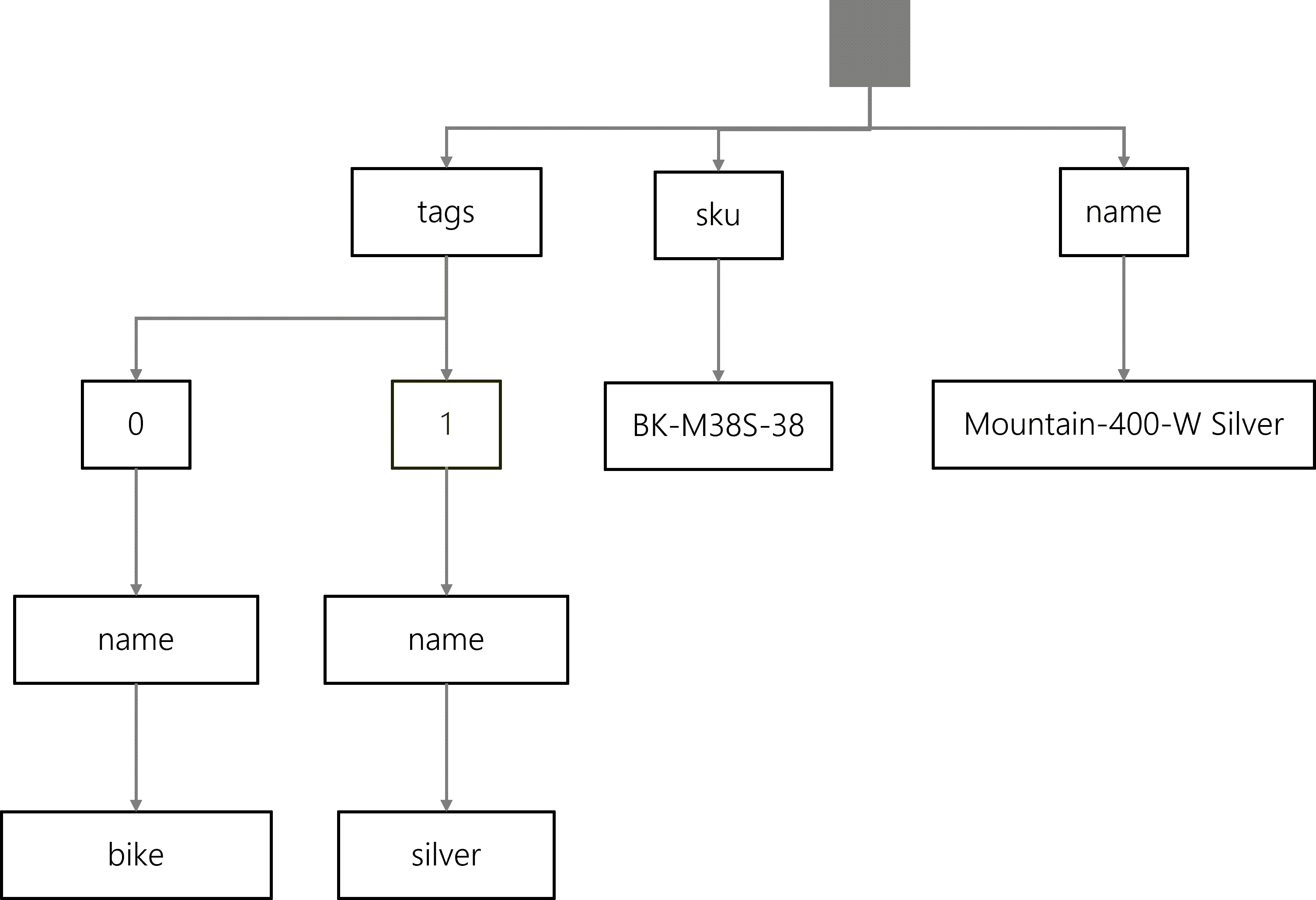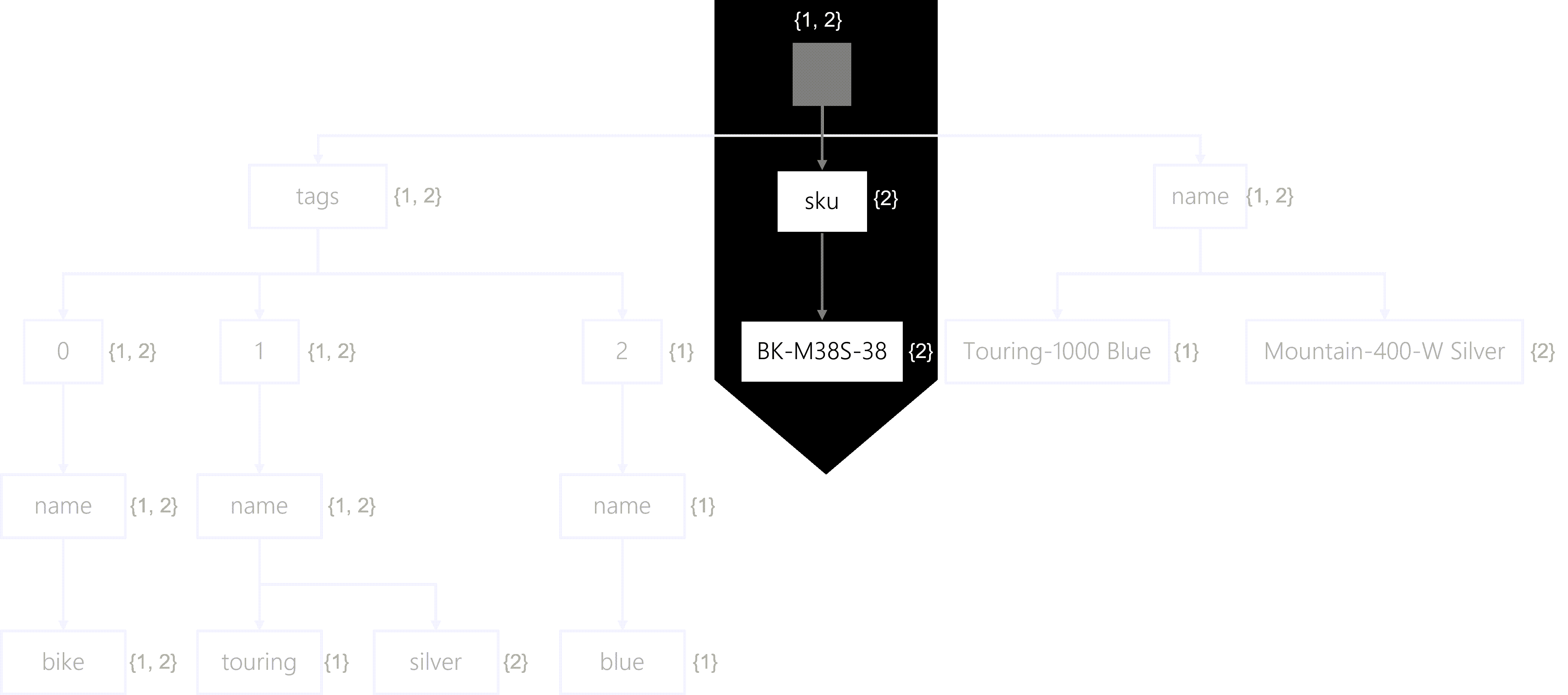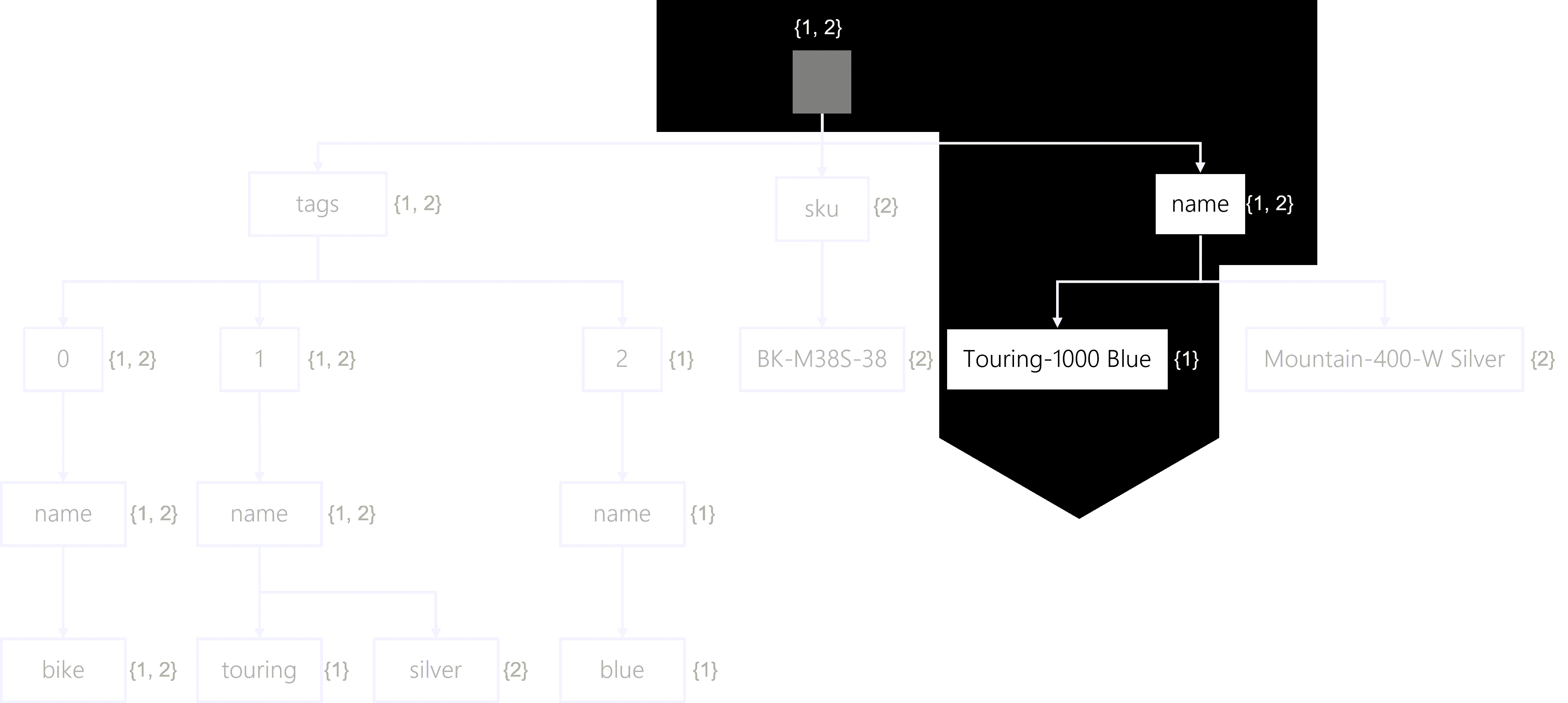Understand indexes
Every Azure Cosmos DB for NoSQL container has a built-in policy that determines how each item should be indexed. By default, this policy dictates that create, update, or delete operations for any item should update the index and that the index should include all properties of every item. This intelligent default is excellent at the start of many solutions as you get good and predictable query performance without having to dive too deeply into tuning an index.
Let’s review an example of the default policy in action.
Here, we have a JSON object representing a product named Touring-1000 Blue with three tags (bike, touring, and blue). You should pay attention to the number of things in the tags array.
{
"name": "Touring-1000 Blue",
"tags": [
{
"name": "bike"
},
{
"name": "touring"
},
{
"name": "blue"
}
]
}
If we were to represent this JSON object as a tree, this representation would include traversal paths for both the name property and its value (Touring-1000 Blue). The tree also contains three traversal paths for the three objects in the tags array, each with a leaf node for their name properties and respective values.

As a counterpoint, here is another JSON object representing a product named Mountain-400-W Silver that only contains two tags (bike and silver). This object is also unique in that it includes a sku property with a value of BK-M38S-38.
{
"name": "Mountain-400-W Silver",
"sku": "BK-M38S-38",
"tags": [
{
"name": "bike"
},
{
"name": "silver"
}
]
}
The tree representation for this JSON object includes simple traversal paths for the name and sku properties. It also contains two traversal paths for the two objects in the tags array and corresponding leaf nodes for their name properties and respective values.

To conceptualize our container’s index, we tend to think of the index as a union of all trees for each item in the container. Altogether, this creates an inverted index which gives our database engine something fast and efficient to traverse when performing query operations. Each node in the tree has metadata indicating which items in our index matches that specific node.

To illustrate this example, consider the following SQL query:
SELECT * FROM products p WHERE p.sku = 'BK-M38S-38'
Instead of traversing through each item individually, the search engine will traverse the inverted index. For this query, let’s walk through a sample traversal:
- First, the search engine will start at the root. As of now, all items match.
- Next, the search will traverse the sku property. Now, only the #2 item matches.
- Finally, the search will end at the BK-M38S-28 node. Still, only the #2 item matches.
The search results are that the #2 item (Mountain-400-W Silver) matches, and the SQL query will return all fields from this item.

Using another example SQL query:
SELECT p.id FROM products p WHERE p.name = 'Touring-1000 Blue'
You can walk through a similar traversal:
- Starting at the root, all items match.
- Moving to the name property, Still, all items match.
- Finally, ending at the Touring-1000 Blue node, Only the #1 item matches.
The search results are that the #1 item (Touring-1000 Blue) matches, and the SQL query will return only the id field from this item.
